
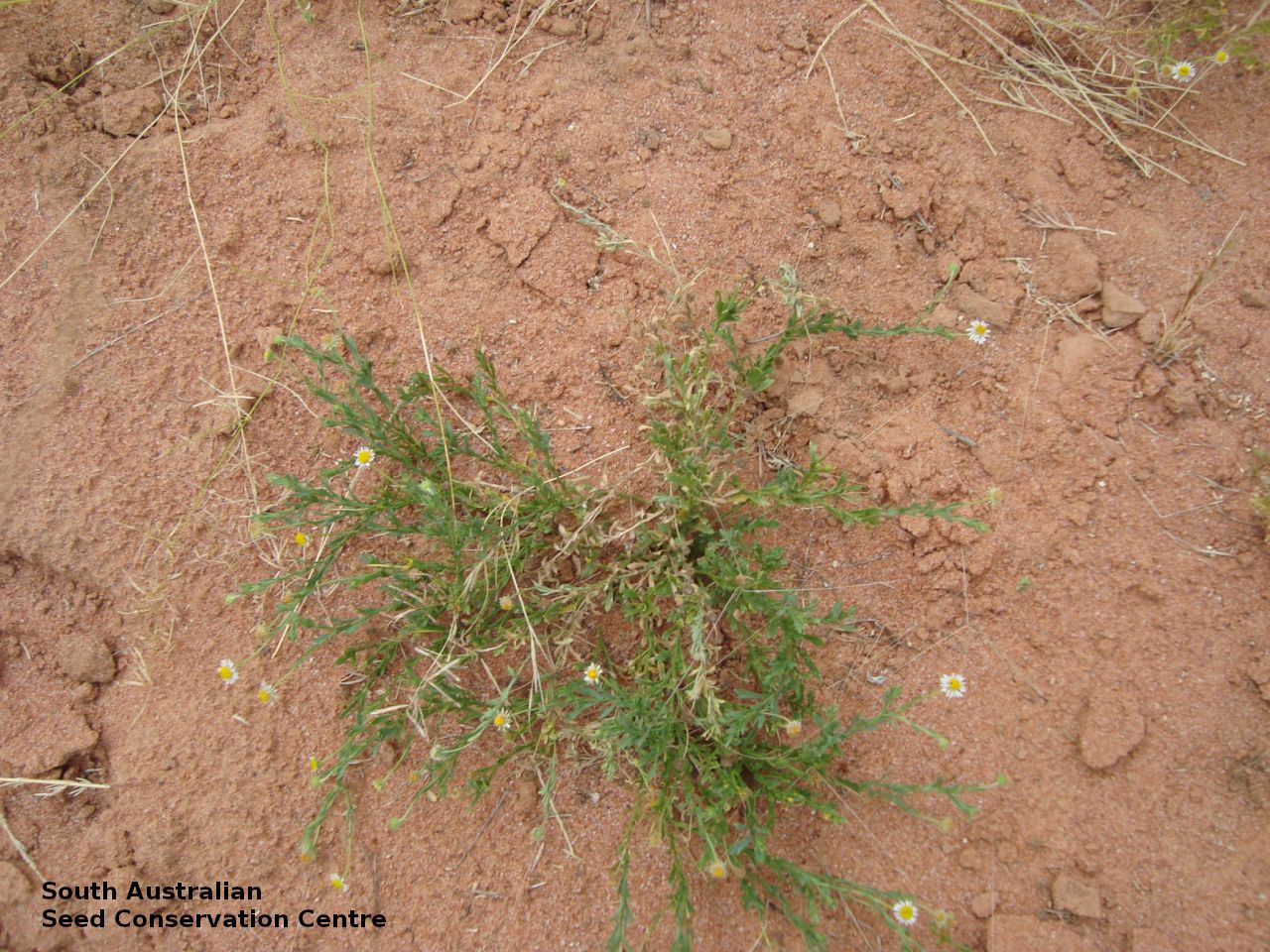
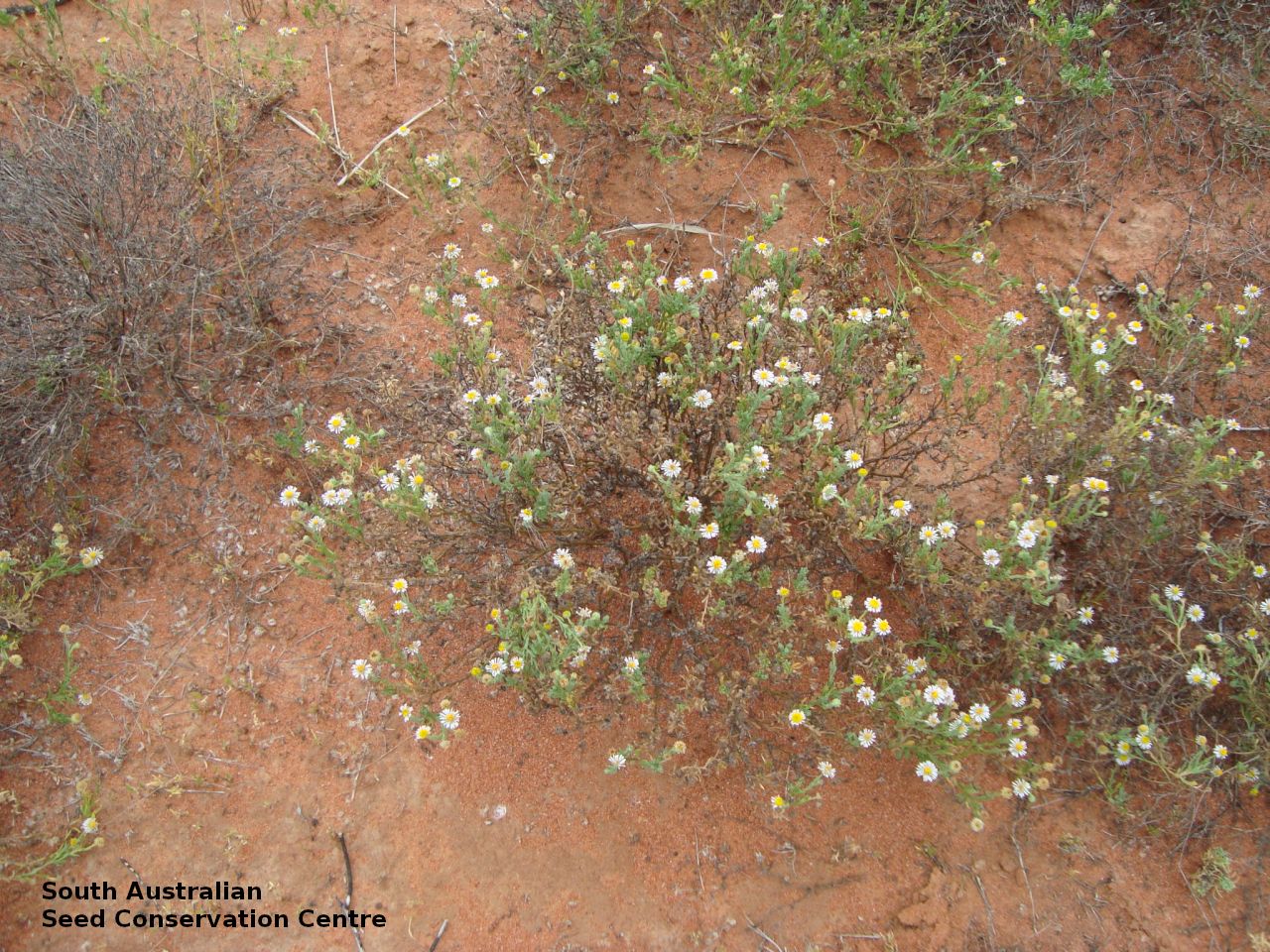
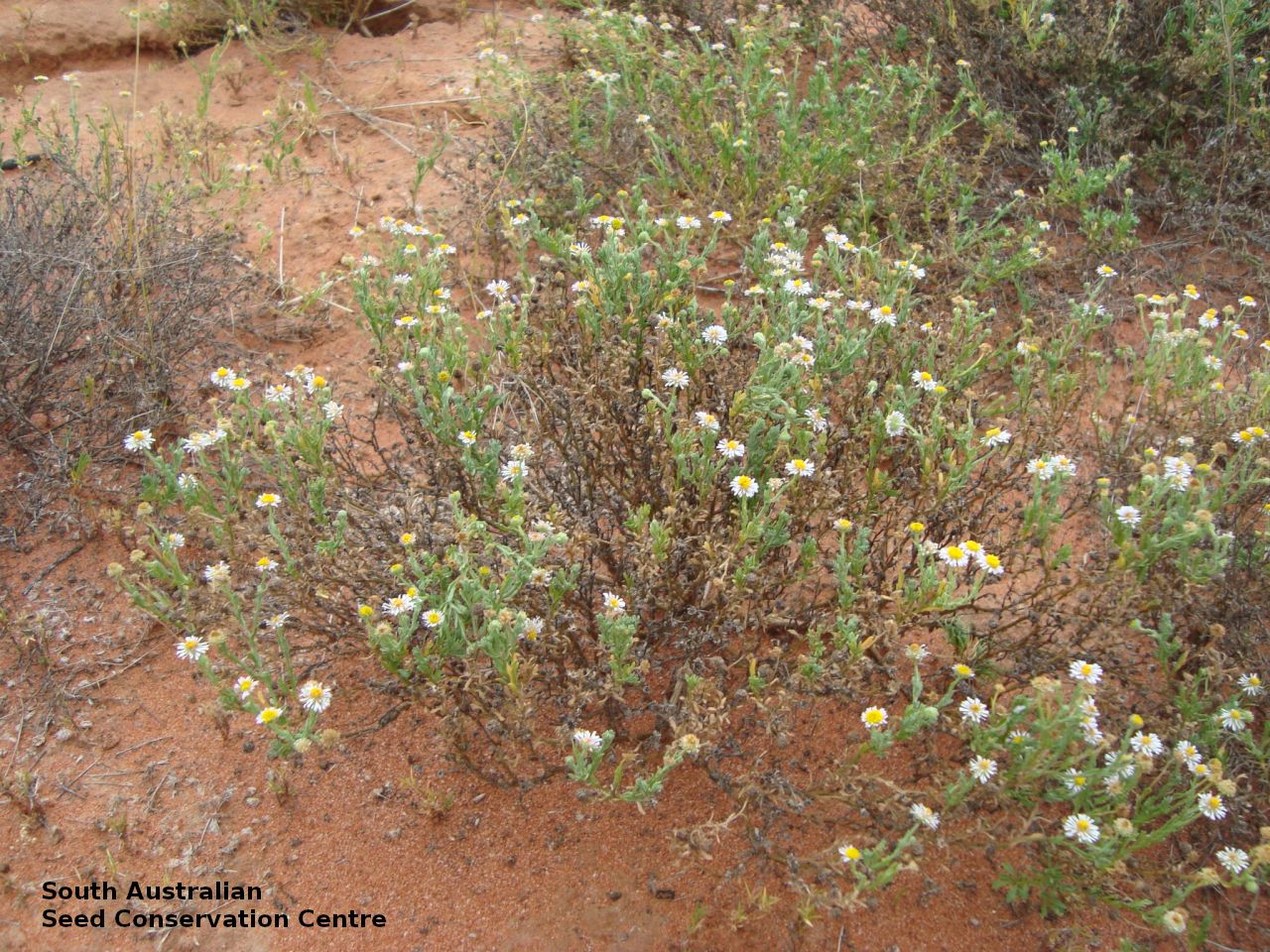
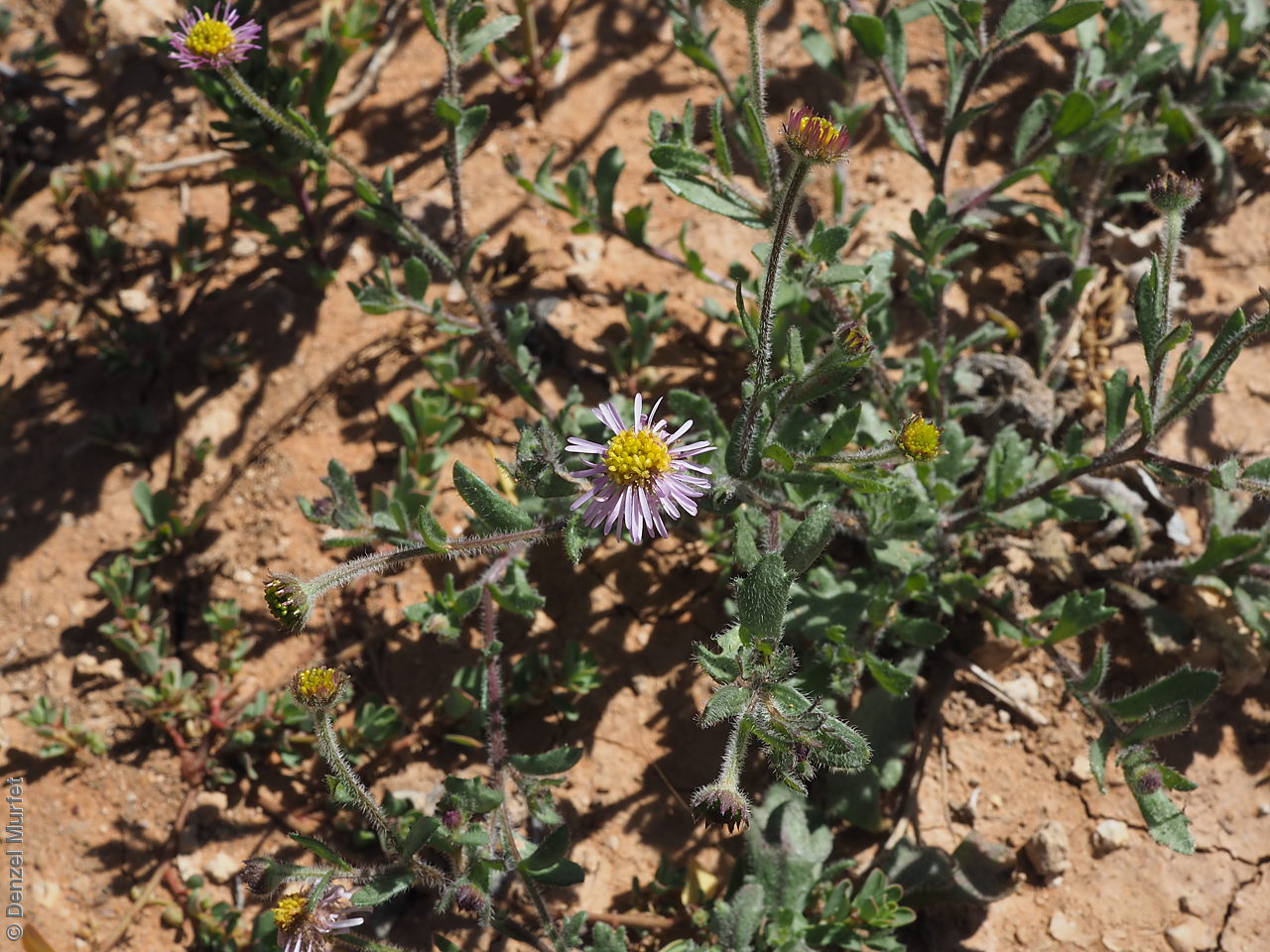
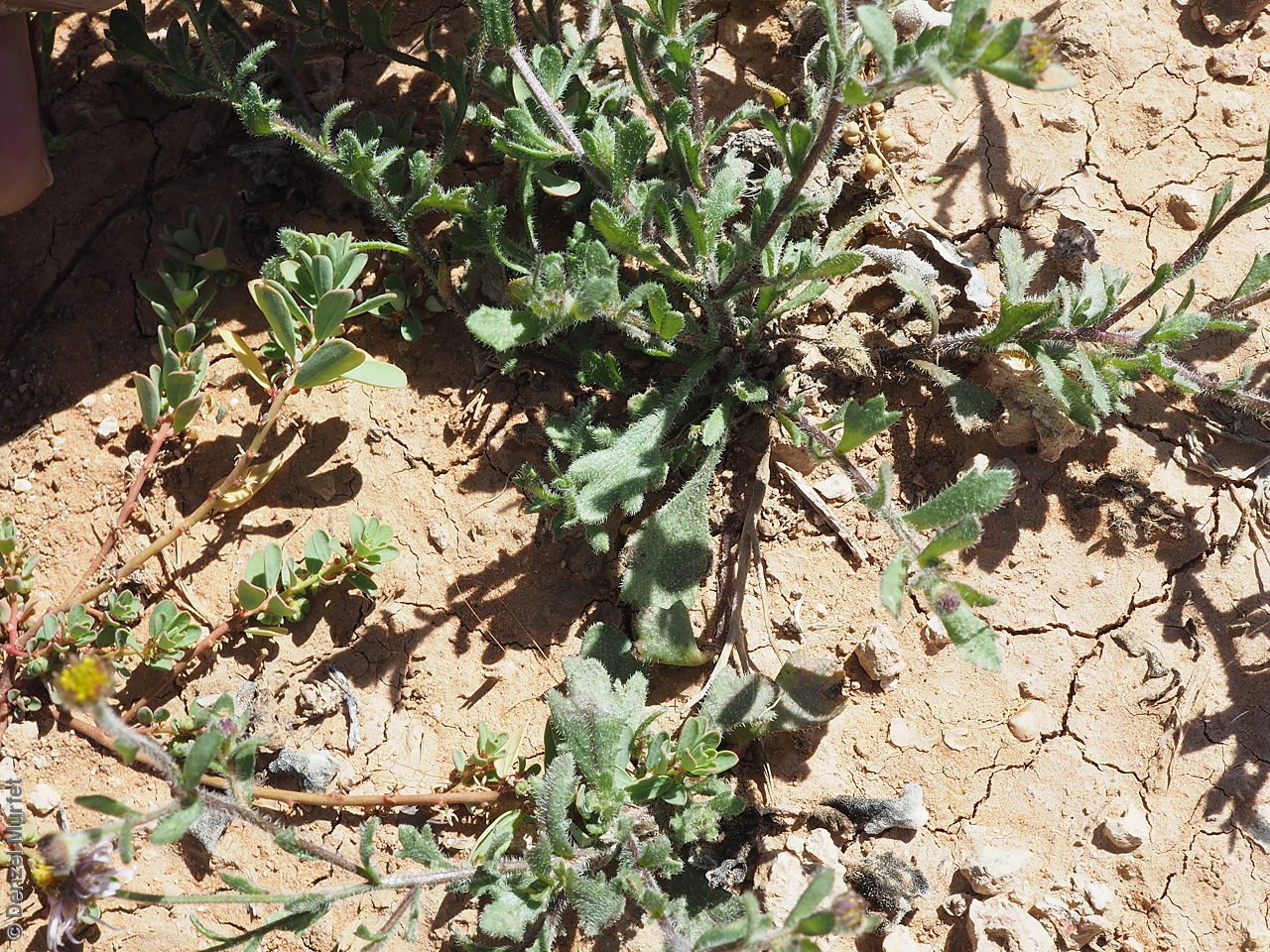

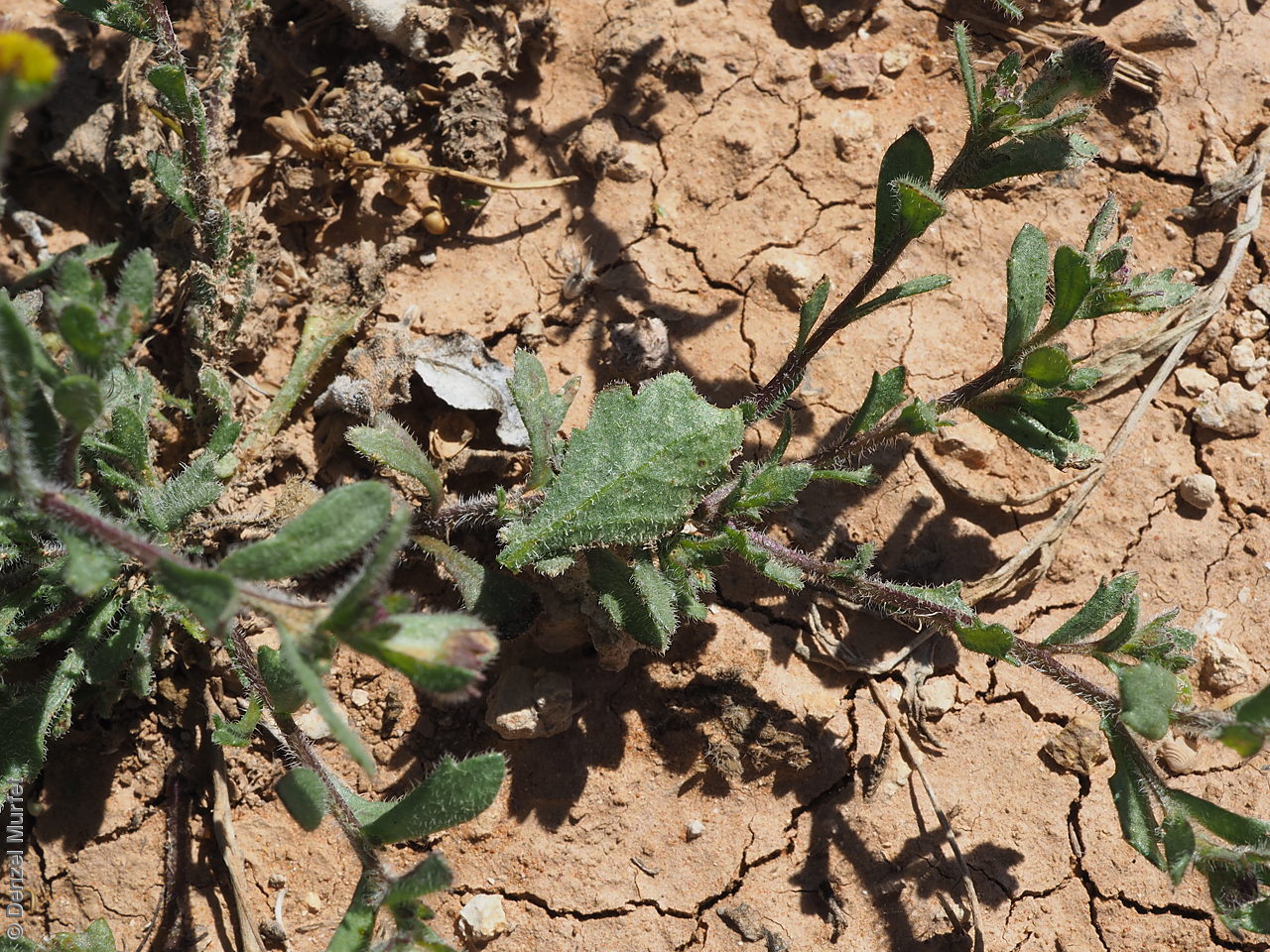

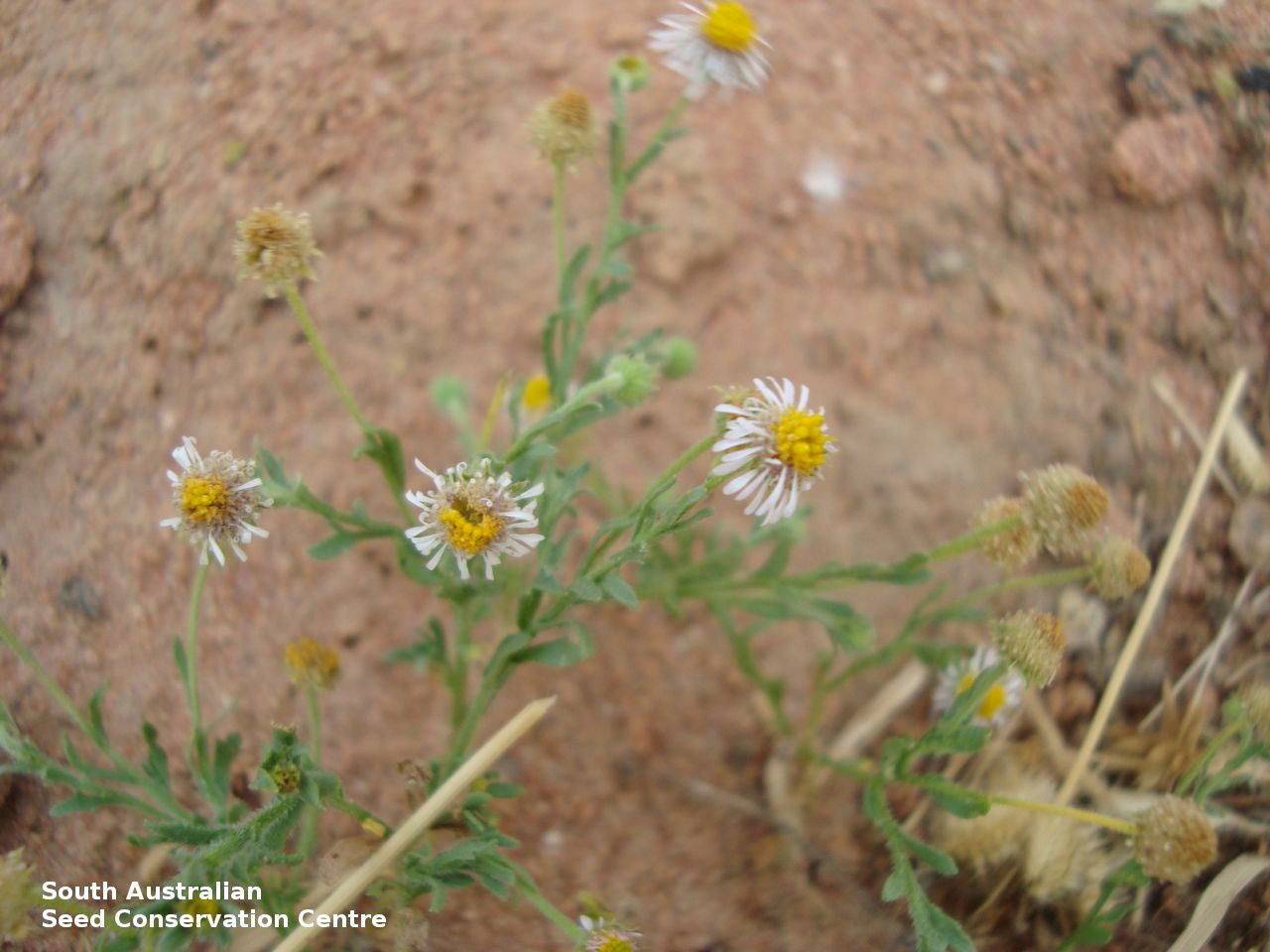
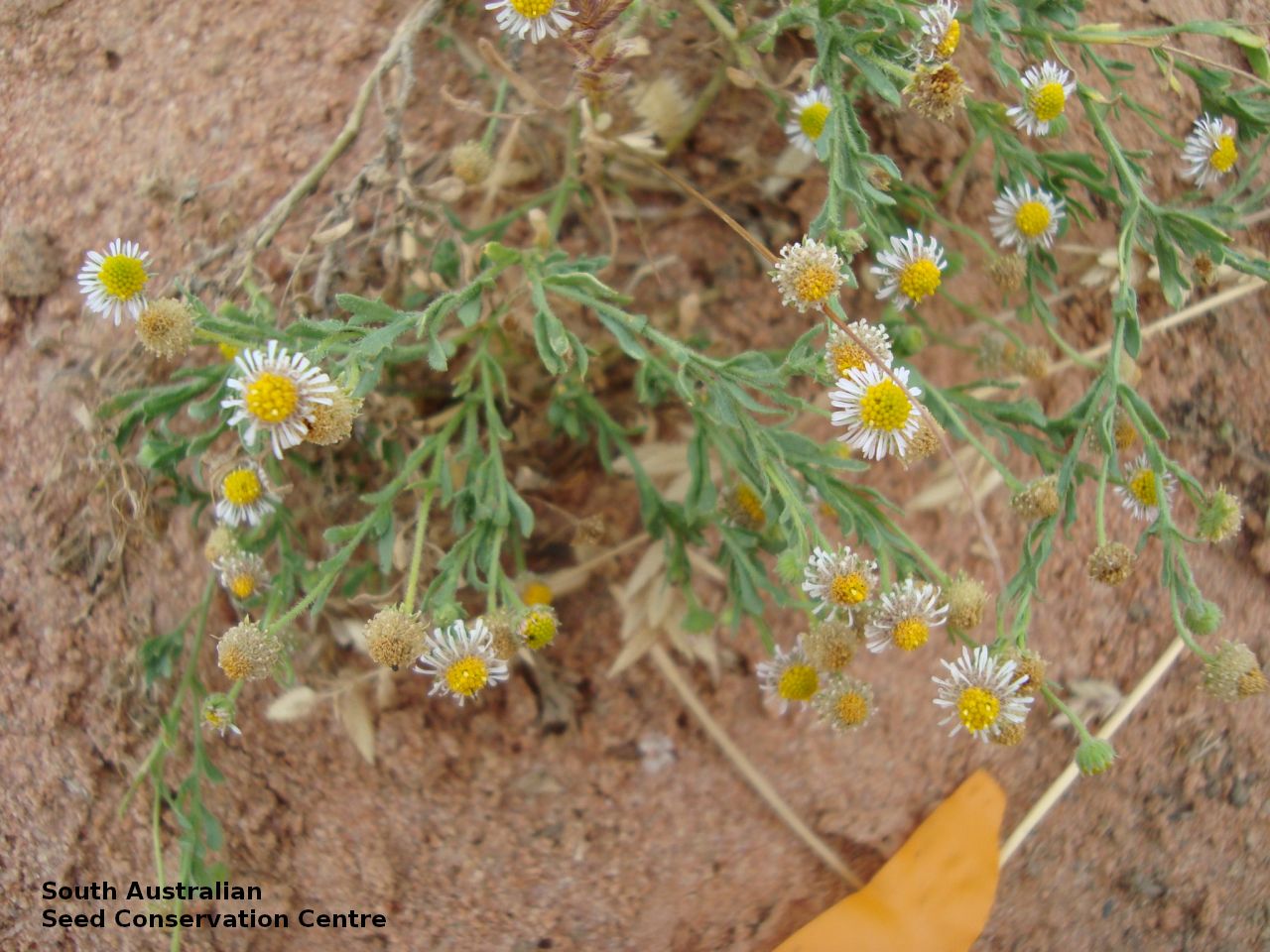
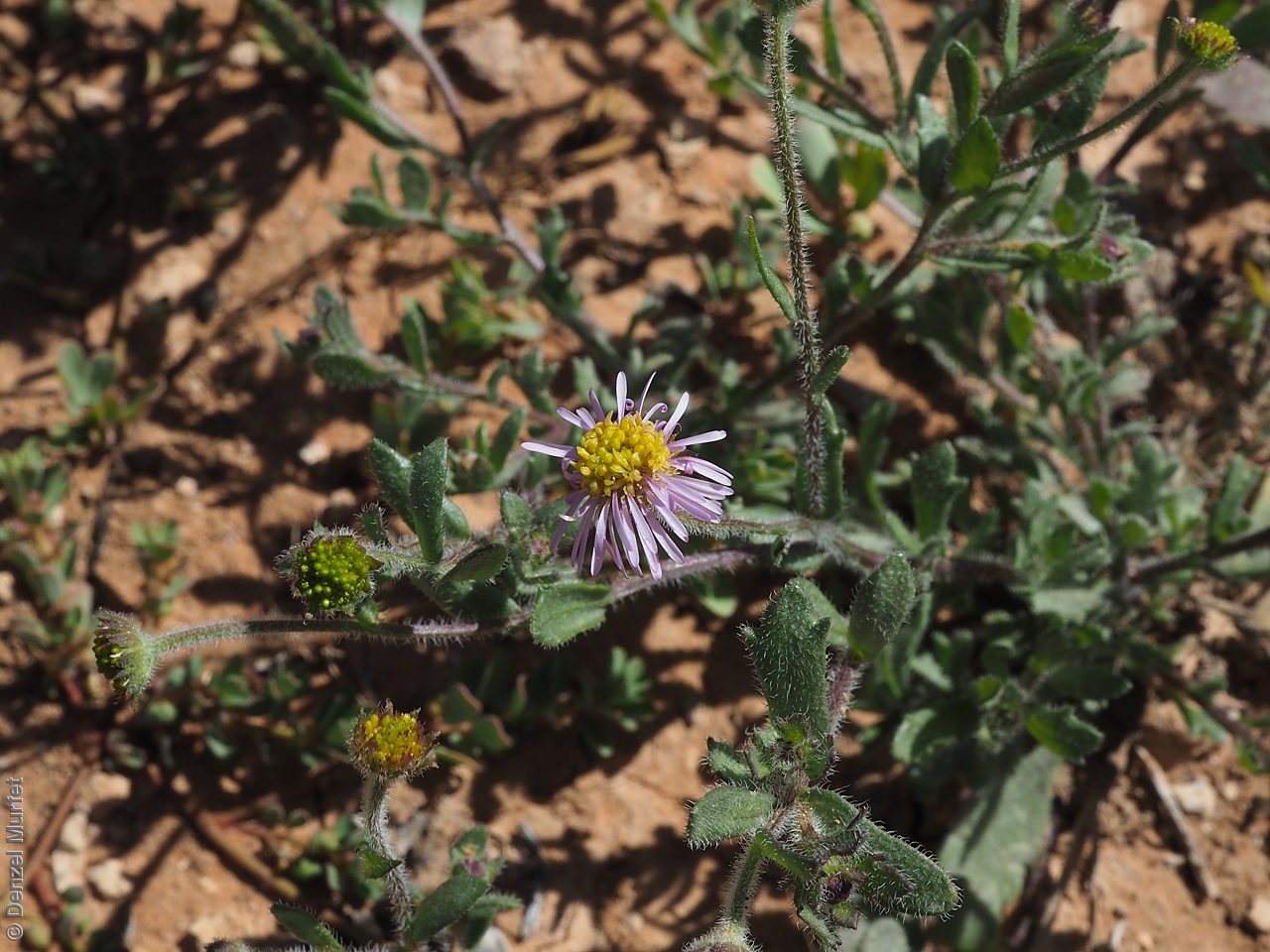
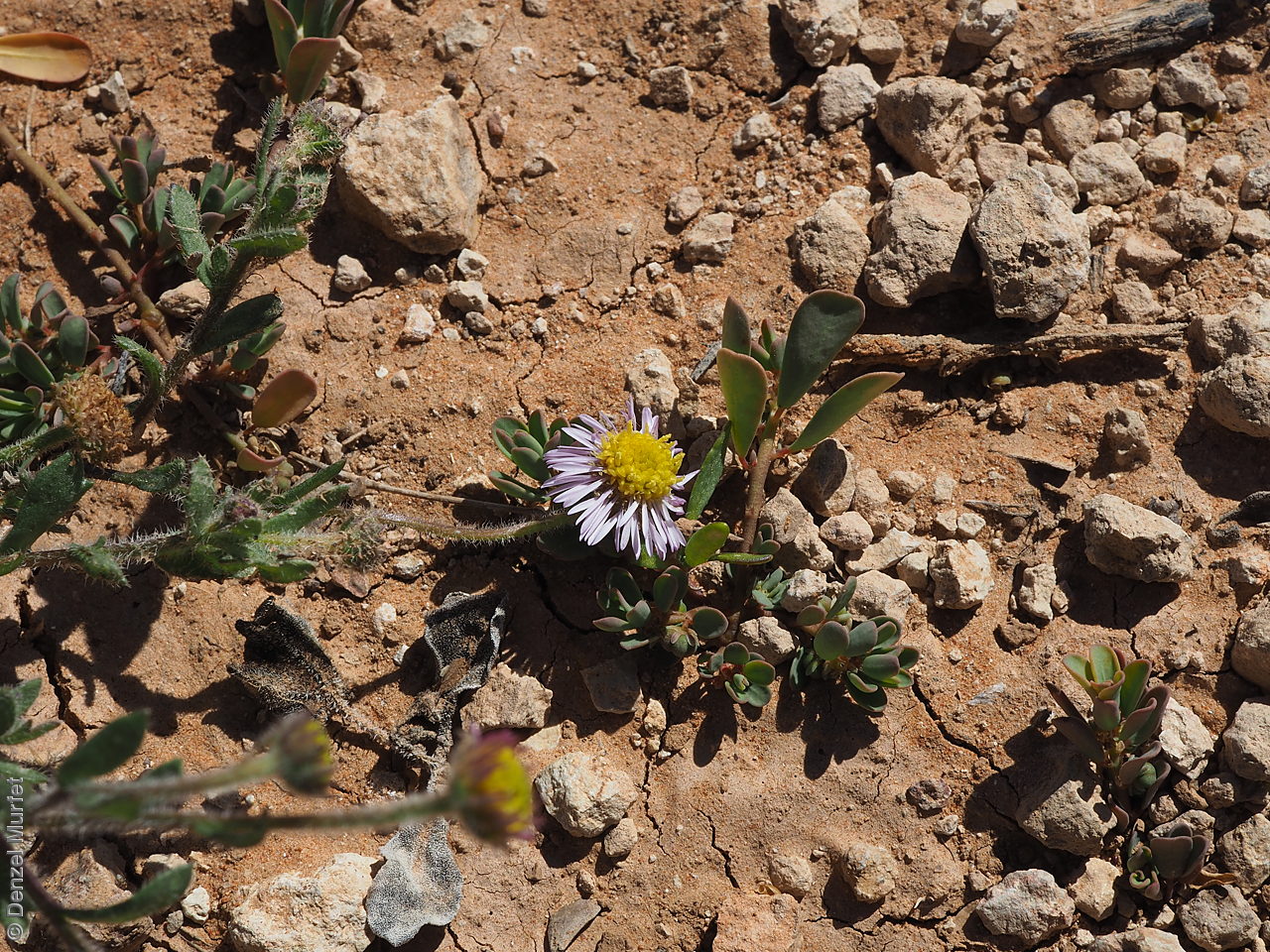



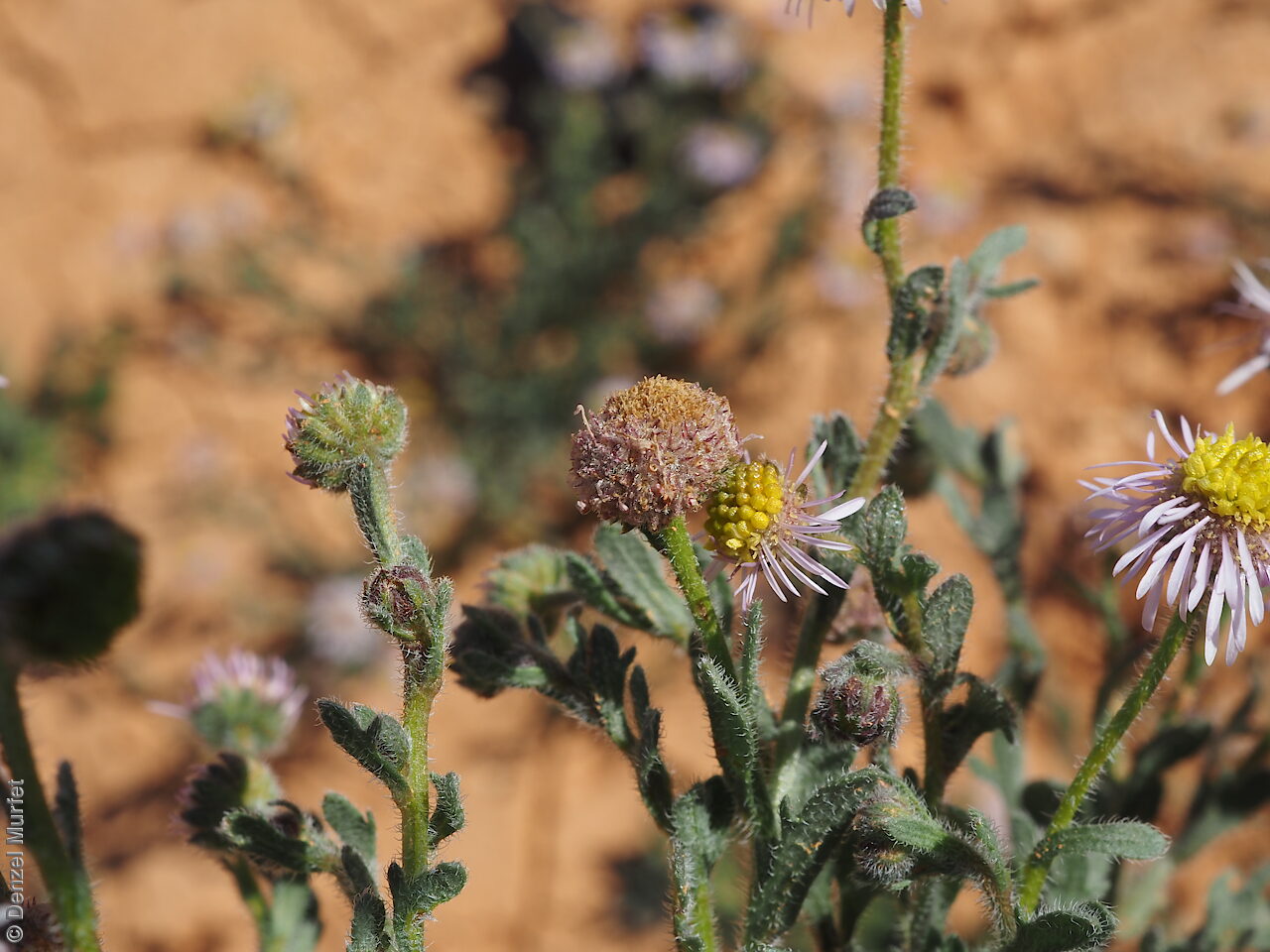
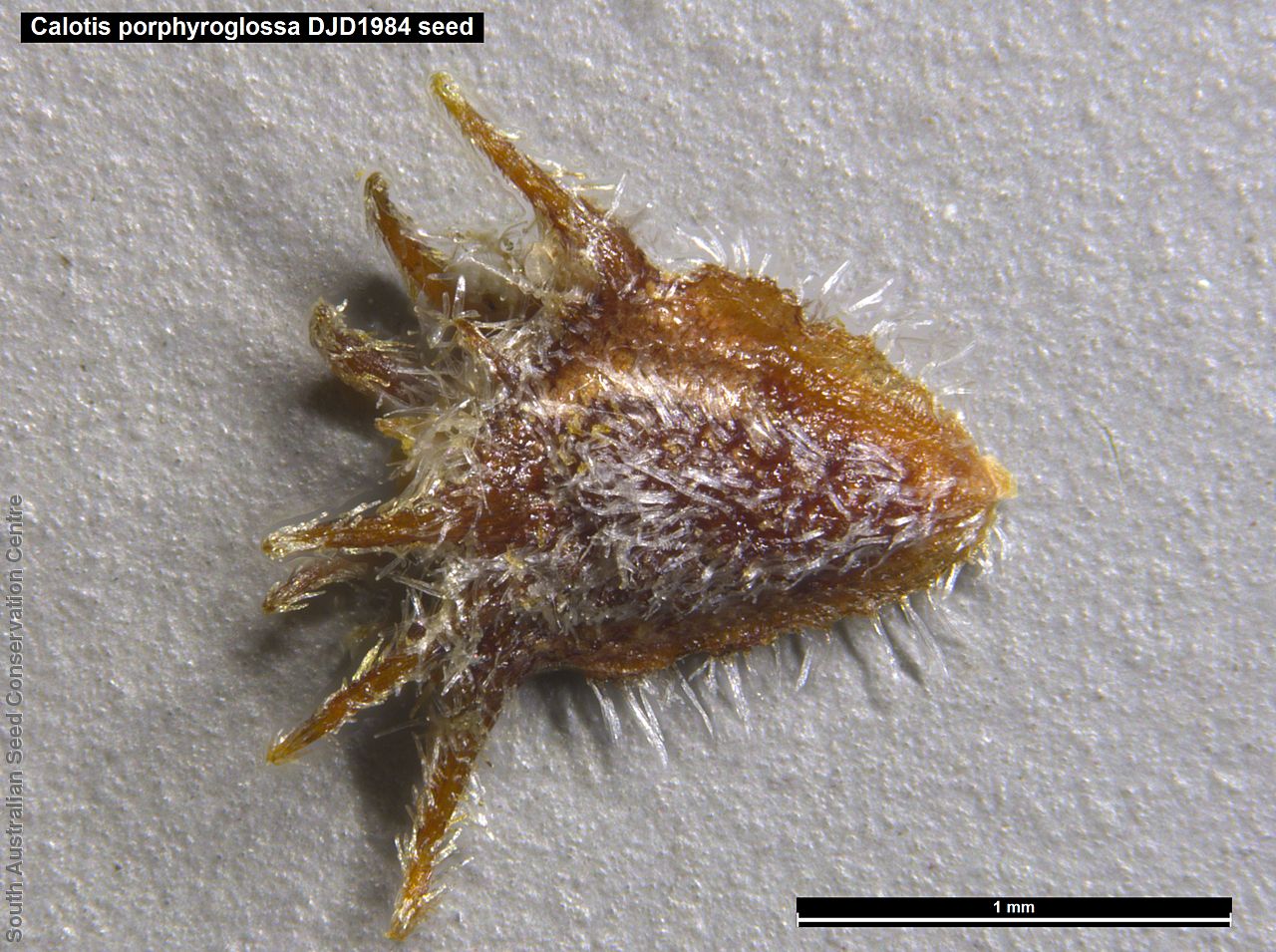


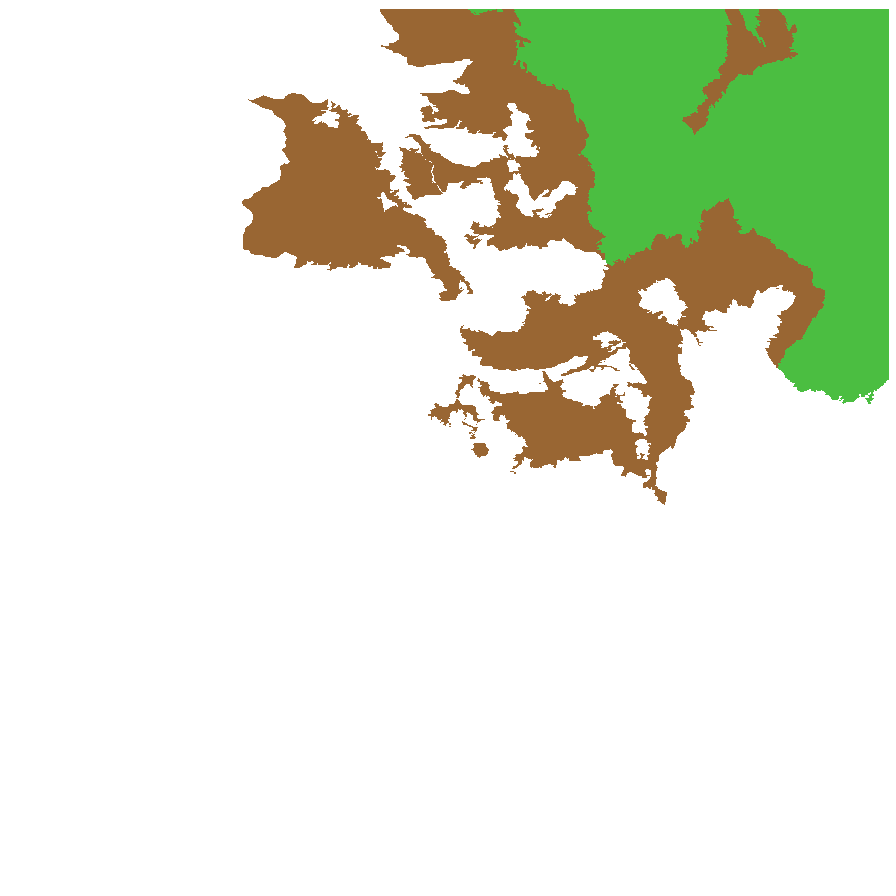
Botanical art
Prior names
Calotis microcephala
Common names
Channel Burr-daisy
Etymology
Calotis from the Greek 'kalos' meaning beautiful and 'otos' meaning ear, after the first species named in the genus Calotis cuneifolia which has an ear-shaped pappus. Porphyroglossa from the Greek 'porphyra' meaning purple-ish, or a reddish dye made from it and 'glossa' meaning tongue, alluding to the shape and colour of the ray florets.
Distribution and status
Found in the north and north-east parts of South Australia growing on alluvial soils of floodplains and river beds. Also found in Western Australia, Northern Territory, Queensland and New South Wales. Native. Common in South Australia. Uncommon in New South Wales. Common in the other States.
Herbarium regions: North Western, Lake Eyre, Gairdner-Torrens, Flinders Ranges
AVH map: SA distribution map (external link)
Plant description
Annual herb to 40 cm high with stems erect or ascending, much-branched, hairy and often becoming woody at the base. Basal leaves petiolate, cuneate to 4 cm long, soon withering. Stem leaves sessile, cuneate to narrow-cuneate to 4 cm long and 10 mm wide, narrow at the base, dentate or lobed near the apex, strigose to pubescent. Flower-head solitary or in loose leafy terminal cymes of 2-8 flowers, ray florets mauve. Flowering between June and December. Fruits are brown round spiny fruit-head. Seeds are brown triangular seed to 1.5 mm long covered in short hairs and short spines at one end. Seed embryo type is spatulate fully developed.
Seed collection and propagation
Collect seeds between September and January. Collect mature seed heads that are dried and turning brown by picking off the heads and placing them in a paper bag. Be careful as the heads are spiny. Leave the heads in the paper bag to dry for at least a week. No further cleaning required if only the heads are collected. If other material were collected, use a sieve to separate the unwanted material. Whole heads can be stored with a desiccant such as dried silica beads or dry rice, in an air tight container in a cool and dry place.e Seeds are non-dormant, viable seed should germinate readily.
| Location | No. of seeds (weight grams) | Number of plants | Date collected | Collection number Collection location | Date stored | % Viability | Storage temperature |
|---|---|---|---|---|---|---|---|
| MSB | 2,000 (0.91 g) | 50 | 8-May-2007 | RJB72633 Lake Eyre |
Number of plants: This is the number of plants from which the seeds were collected.
Collection location: The Herbarium of South Australia's region name.
% Viability: Percentage of filled healthy seeds determined by a cut test or x-ray.